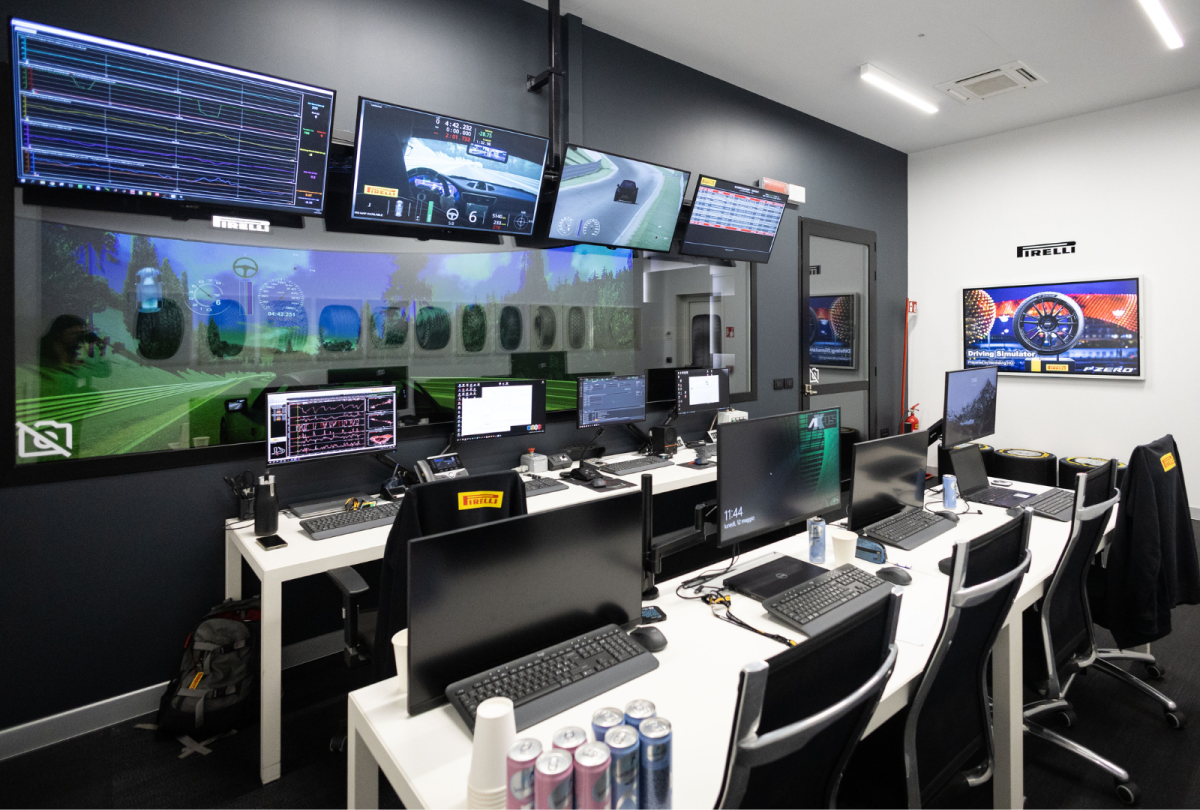
Last year, Pirelli showed off its first 5G-connected Cyber Tyre. This year, it’s taking that connectivity a step further. Artificial intelligence (AI) helped develop Pirelli’s tires of the future, its new-generation P Zero product line, in record time, with algorithms making the connectivity vital to the company’s next steps.
Pirelli sells the P Zero in five types: P Zero Trofeo Track, P Zero Trofeo RS, P Zero R, P Zero and P Zero E. These types deliver a variety of treads, compounds and sizes, optimized for different categories of models, from performance sports cars to daily driver SUVs. The Track version is only available in the U.S.
The onset of COVID-19 caused northern Italy-based Pirelli to rethink the way it designs, engineers and tests tires. Like in many companies, the pandemic hastened Pirelli’s speed of digital research and development exercises.
Pierangelo Misani, Pirelli’s chief technical officer and executive vice president, told Newsweek that the journey started “many years ago” and that’s led to today, where tire development tests are first conducted in a digital simulator and only much later in the process do physical prototypes make an appearance.
Pirelli
Much of this relies on developing a digital twin of a tire that could be brought to market. Digitizing the development has many advantages, not the least of which is time.
“It’s true that we have been able to accelerate dramatically the development of our products,” Misani said. “We have been able to speed up the development pace at minimum 30 percent in terms of development time… We have been able to develop a complete product line in a fully digital way in less than 18 months.” That 18 months spans the process from conception of the idea to a new product being on the market.
With the implementation of the 5G technology in Pirelli tires, the company’s digital product and design development cycle is now circular. The virtual compound, lab prediction and design suite steps rotate to the tire and driving simulator stages before the model goes on sale. Then, the Cyber Tyre’s feedback is received and taken into account as the next product development cycle begins.
Developing a tire using physical modeling is also a materials-heavy process. Not utilizing those materials or the processes to manufacture them makes Pirelli a greener company.
This new style of development is enabled by an AI process similar to that used by the pharmaceutical industry. “The full process of development of products today is digitalized based on models. These models are typically based on physical laws or mathematical laws,” Misani said.
“It’s very difficult to create physical models for chemical components. These chemical components may only be modeled through artificial intelligence,” he explained, correlating it to how the pharmaceutical industry works.
“Everybody knows that when we speak about artificial intelligence, very often examples are taken from the world of pharma industry to see how they develop molecules based on the AI. So to develop molecules, they don’t describe them physically with mathematical models. They directly go to AI. This is the same thing we are doing to develop [tire] compounds,” Misani said. “AI is extremely powerful when it’s fed with a lot of data, and we have a lot of data from our chemical laboratories.”
The company has named its AI-powered, customized algorithm technology the “virtual compounder.” The virtual compounder has been used to develop all of Pirelli’s P Zero product lineup, and the company has digitally modeled more than 1,000 compounds using AI.
Misani also points out that the results from the virtual compounder are “extremely powerful and accurate” because they are not at the mercy of physical extraordinary forces or susceptible to human error.
The result of using AI in this way is a tire line that furthers the premium performance proposition for drivers. The tires are capable of handling more torque, horsepower and weight than before, can be tuned for each automaker’s needs and are more sustainable than previous P Zero generations.

Pirelli
The 5G Cyber Tyre technology delivers three types of data to Pirelli headquarters: tire vertical travel, direction of travel and rotational forces. Technology team members use AI to layer this data with GPS, weather, vehicle type and roadway information to develop a fuller picture of driving situations and wear consumption.
That full picture allows Pirelli to analyze the tire’s response to the conditions and determine if an alteration to the tread or compound is needed.
Additionally, Pirelli could use AI to discover trends in usage and will be able to optimize the supply chain to send tires to regions with more accurate predictability.
The company is modifying its staffing levels and jobs to fit its new, more technical needs. Pirelli will have 80 employees working on AI and digital solutions by the end of 2025. Those workers are based at the company’s outpost in Bari, Italy.
